Friday Feb 21, 2025
Friday Feb 21, 2025
Wednesday, 22 August 2018 00:00 - - {{hitsCtrl.values.hits}}
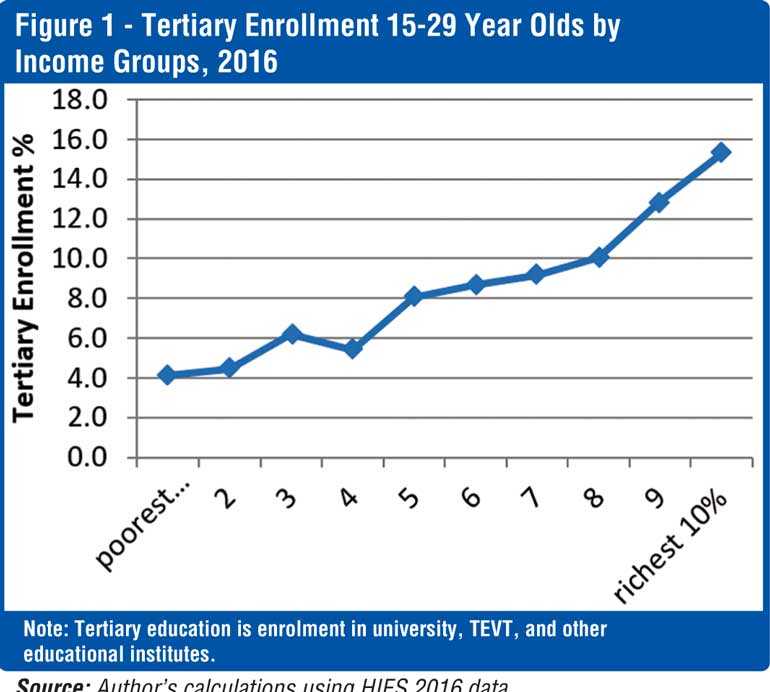
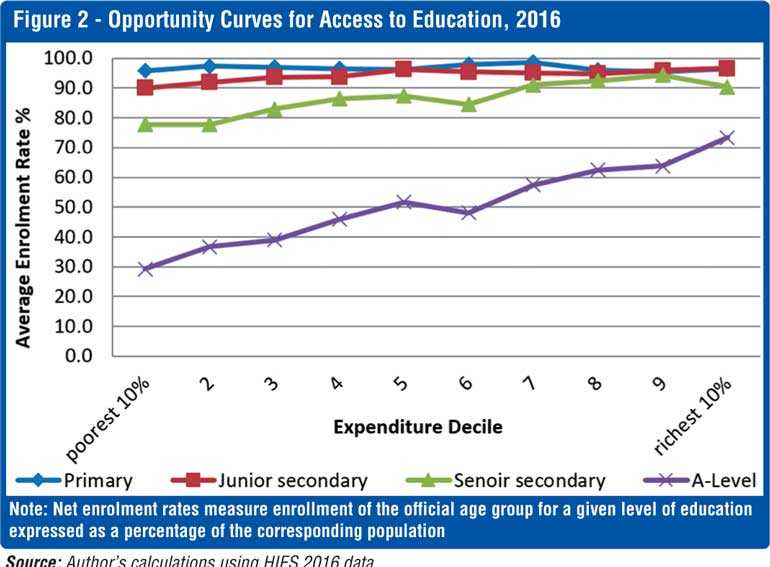
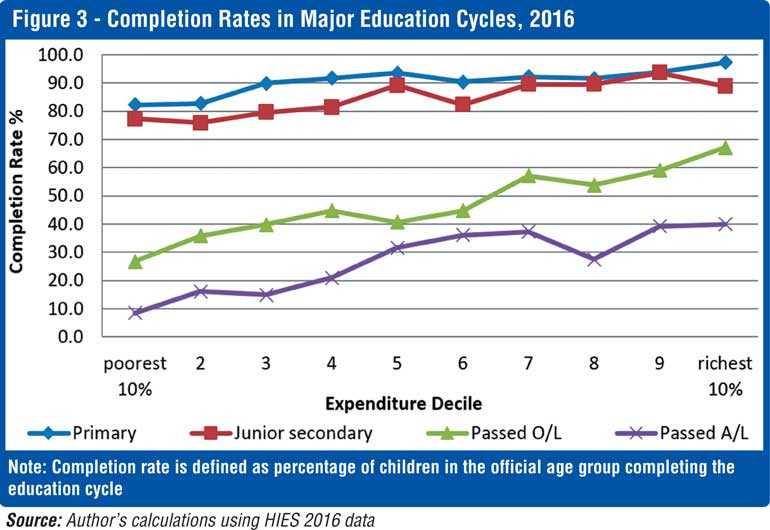
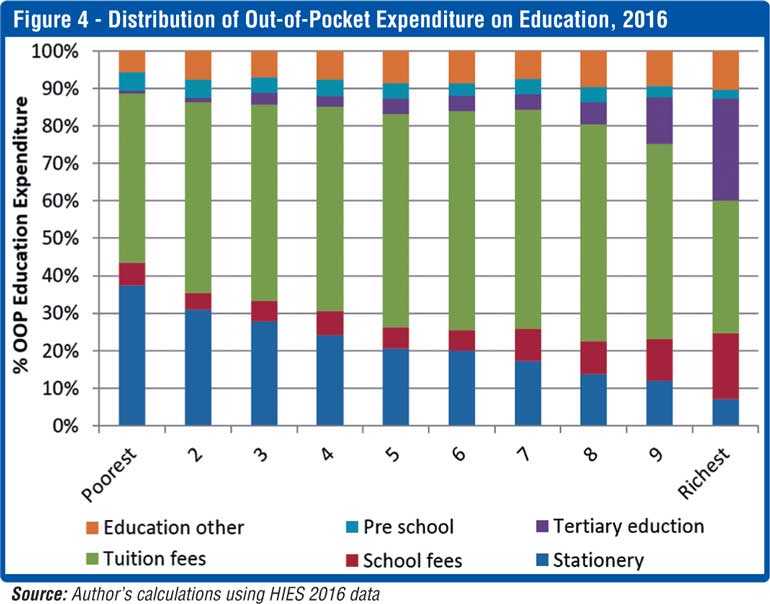
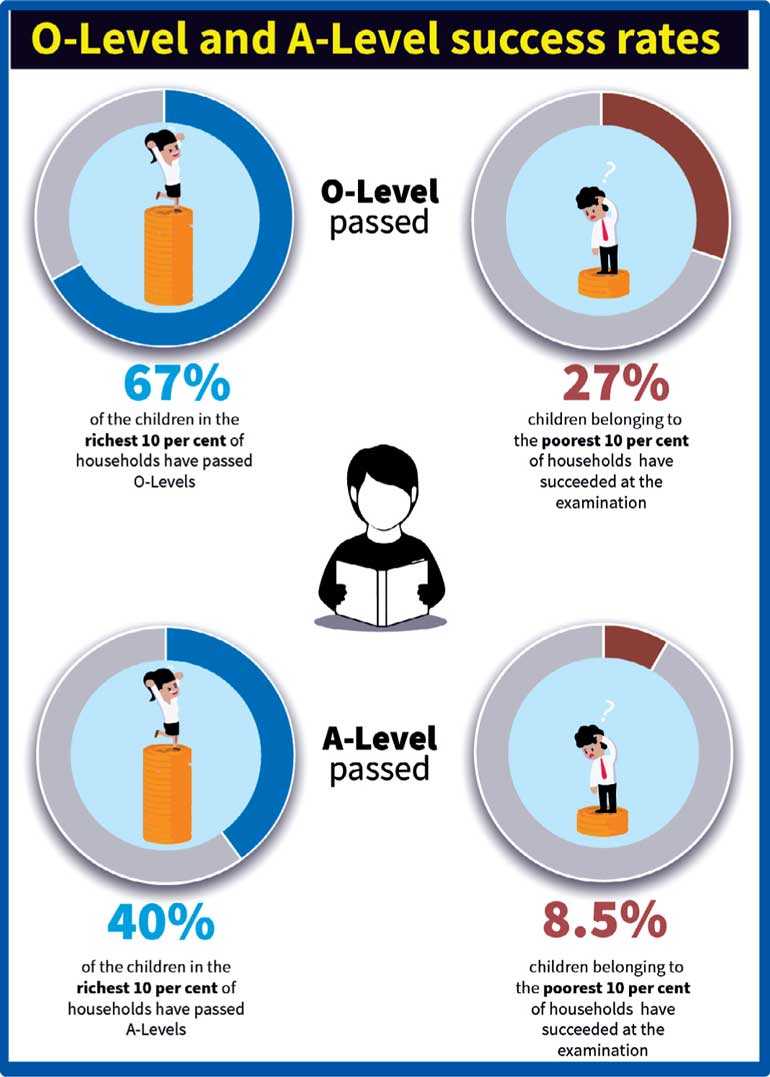 By Priyanka Jayawardena
By Priyanka Jayawardena
According to the 2016-2017 rankings of the Global Competitiveness Index (GCI), Sri Lanka is placed at 68 out of 138 countries on the higher education and training pillar. Sri Lanka’s performance is mainly constrained by the sub-index on gross tertiary education enrollment. In this sub-index, Sri Lanka does poorly at 98th place.
Poor children, in particular, have limited access to skills development programs: Figure 1 shows the variations in tertiary enrollments among 15-29 year olds, by income groups. Most school-dropouts, especially children from poor households, usually engage in casual jobs or low-skilled employment. In fact, these inequities are not only limited to tertiary education; these disparities are evident even at higher grades of school education.
As Sri Lanka enters an increasingly competitive international environment, with a renewed enthusiasm to transform itself into a modern economy, the importance of promoting technological innovations and generating an educated workforce, possessing market-oriented skills, cannot be over emphasised. High quality human resources and a skilled labour force are vital to improve the country’s global competitiveness.
As of 2014, only around 10% of age 20 and above population has had formal professional or technical training relevant to their occupation.i In this backdrop, this blog explores Sri Lanka’s existing inequities in accessing education and skills development gaps that hinder the country from attaining a dynamic and skilled labour force.
Majority of poor children abandon school education after O-Levels
Access decreases for higher levels of school education: Sri Lanka’s basic education is almost universalised, but education participation levels fall at higher levels of education. With an island-wide network of State-funded schools and other welfare measures, Sri Lanka has made remarkable progress in terms of access to education. Net enrolment rates at primary (grade 1-5) and junior secondary levels (grade 6-9) are 97% and 94%, respectively. However, net enrolment rates have been falling at higher levels. Only 87% of the students in the appropriate ages are enrolled at the upper secondary level (grade 10-11), while net enrolment rates were only 51% at the Advanced Level (A-Level) (grade 12-13).
Further, equitable access to education decreases in higher grades: Children from lower income groups have even less access to education at higher grades. This makes access to education at higher levels more inequitable. Particularly, children from lower income groups have less access to education at the A-Levels, where enrolment rates vary from 29% in the poorest decile to 73% in the richest decile (Figure 2). This is partly due to disparities in Ordinary Level (O-Level) success rates by income groups.
There are also disparities in education completion rates by income groups. These are most prominent in the O-Level and A-Level success rates (Figure 3). Around 67% of children in the richest 10% of households have passed O-Levels, while only 27% children belonging to the poorest 10% of households have succeeded at the O-Level examination. Similar disparities are seen in A-Level success rates as well. Also, completion rates at all levels of education has room for improvement.
One of the reasons for such variations is the affordability of Out-of-Pocket (OOP) expenditure for education. Although state education services are provided free of charge, households which reported education expenditure, had to spend, on average, around Rs. 3,870 per month for educational expenses. As such, many students discontinue their school education due to poor performance at the national level examinations coupled with financial difficulties.
What are the driving costs of education OOP?
Private tuition fees and stationery costs are the main education-related costs for lower income groups (Figure 4). Around 45% of education OOP expenses incurred by the lowest decile of households are spent on private tuition fees, followed by 37% of OOP education expenses spent on stationaries.
Tuition has become a crucial ingredient for succeeding at the national examinations. Even the poorest 10% of households that reported spending on private tuition fees, spent around Rs. 1,000 per month for private tuition, while the poorest households which reported spending on stationery, spent around Rs. 470 per month for stationery. Given that average total monthly expenditure of the poorest 10% of households was around Rs. 19,720, affordability of these costs is questionable. More importantly, these costs may negatively affect school attendance of poor children. Further, the households that spend on tertiary education, spent on average, Rs. 12,930 per month for tertiary education. Figure 4 highlights that only the richest 20% of households bear tertiary education related costs.
Addressing critical concerns of inequities in skill development opportunities
Many students leave the school system at the O-Levels and A-Levels and do not enrol for skill development programs. Inequities in access to school education at higher grades and skill development programs are clearly evident. As Sri Lanka aims to accelerate growth, it is vital to develop human capital needed to compete globally. Hence, it is essential for the government to carefully plan and critically examine the present needs of the education sector, and find effective means of catering to these needs, by improving resource mobilisation of education services.
Thus, it is important to identify the reasons for gaps in access to education and improve access to students coming from low income backgrounds. Also, it is worth to note that, with the current systems of free education for all, richer people benefit more at the higher grades of school education, as many children from lower income groups abandon school life after O-Levels. Thus, policies should look at ways to improve access to higher grades of education, as well as provide tertiary education to poorer students.
With existing public finance constraints, aligning these education sector needs with dynamic labour market needs is a major challenge. As such, the government should consider introducing more targeted financial assistance programs for needy students, to follow A-Levels or technical training programs.
[Priyanka Jayawardena is a Research Economist at the Institute of Policy Studies of Sri Lanka (IPS). To talk to the author, email [email protected]. To view this article online and to share your comments, visit the IPS Blog ‘Talking Economics’ - http://www.ips.lk/talkingeconomics/]
Footnotes
i Jayawardena, P and R. Miller, (2017), ‘Bridging Skills for Employment in Sri Lanka’ in ‘Sri Lanka Fostering Workforce Skills Through Education – Employment Diagnostic Study,’ Asian Development Bank and International Labour Organization
Discover Kapruka, the leading online shopping platform in Sri Lanka, where you can conveniently send Gifts and Flowers to your loved ones for any event including Valentine ’s Day. Explore a wide range of popular Shopping Categories on Kapruka, including Toys, Groceries, Electronics, Birthday Cakes, Fruits, Chocolates, Flower Bouquets, Clothing, Watches, Lingerie, Gift Sets and Jewellery. Also if you’re interested in selling with Kapruka, Partner Central by Kapruka is the best solution to start with. Moreover, through Kapruka Global Shop, you can also enjoy the convenience of purchasing products from renowned platforms like Amazon and eBay and have them delivered to Sri Lanka.
Discover Kapruka, the leading online shopping platform in Sri Lanka, where you can conveniently send Gifts and Flowers to your loved ones for any event including Valentine ’s Day. Explore a wide range of popular Shopping Categories on Kapruka, including Toys, Groceries, Electronics, Birthday Cakes, Fruits, Chocolates, Flower Bouquets, Clothing, Watches, Lingerie, Gift Sets and Jewellery. Also if you’re interested in selling with Kapruka, Partner Central by Kapruka is the best solution to start with. Moreover, through Kapruka Global Shop, you can also enjoy the convenience of purchasing products from renowned platforms like Amazon and eBay and have them delivered to Sri Lanka.